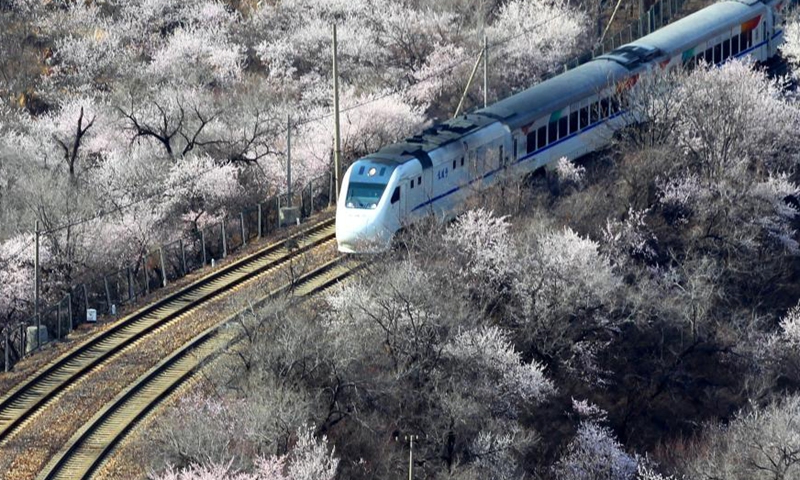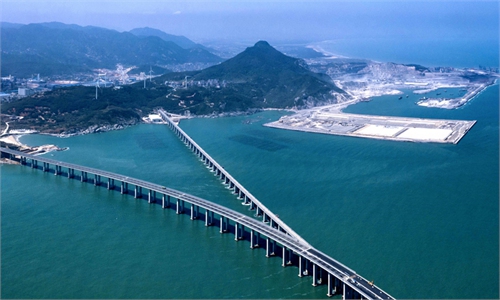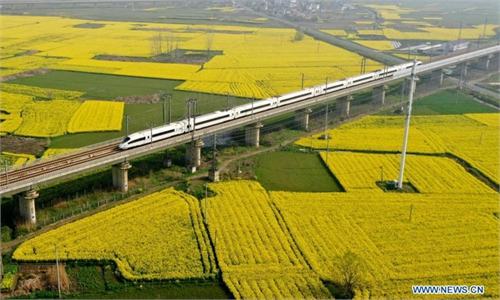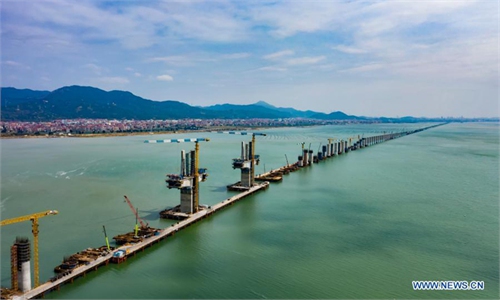China strengthens planning and construction of new high-speed railways
Construction of new parallel lines prohibited if utilization rate of current railway is less than 80%

Suburban train runs amid blooming flowers near the Juyongguan section of the Great Wall in Beijing, capital of China, March 23, 2021. (Photo by Guo Junfeng/Xinhua)
China published a guide on further improvement of railway planning and construction on Monday, clarifying that no new parallel lines shall be built if the utilization rate of current high-speed railway capacity is less than 80 percent. The guide also specifies the classification of operation velocity for high-speed railways.
New railway projects shall be carried out in strict accordance with the plans approved by the country. Function, construction time sequence or construction standards shall not be freely adjusted for the planned projects.
In principle, no construction shall start for projects which are not included in the plans, according to a notice released by China’s State Council on Monday.
The 350 kilometers per hour standard can be adopted for the construction of main high-speed railway lines through provincial capitals and megacities that have a two-way passenger flow density of more than 25 million passenger trips per year or medium-and-long-distance passenger flow proportion of more than 70 percent.
For high-speed railway lines connecting large prefecture level cities or above, with a two-way passenger flow of more than 20 million passenger trips per year, conditions for trains running at a speed of 350 kilometers per hour could be reserved.
Trains can run at 250 kilometers per hour on those railways with an annual passenger flow of 15 million passenger trips.
Intercity railway lines shall be planned and constructed according to the standard for speeds of 200 kilometers per hour or less, in principle.
In addition, the planning and construction of new railway lines in the blank areas in the central and western regions should generally adopt the standard of passenger and freight joint lines.
The guide also pointed out that the construction cost should be strictly under control.
Global Times



